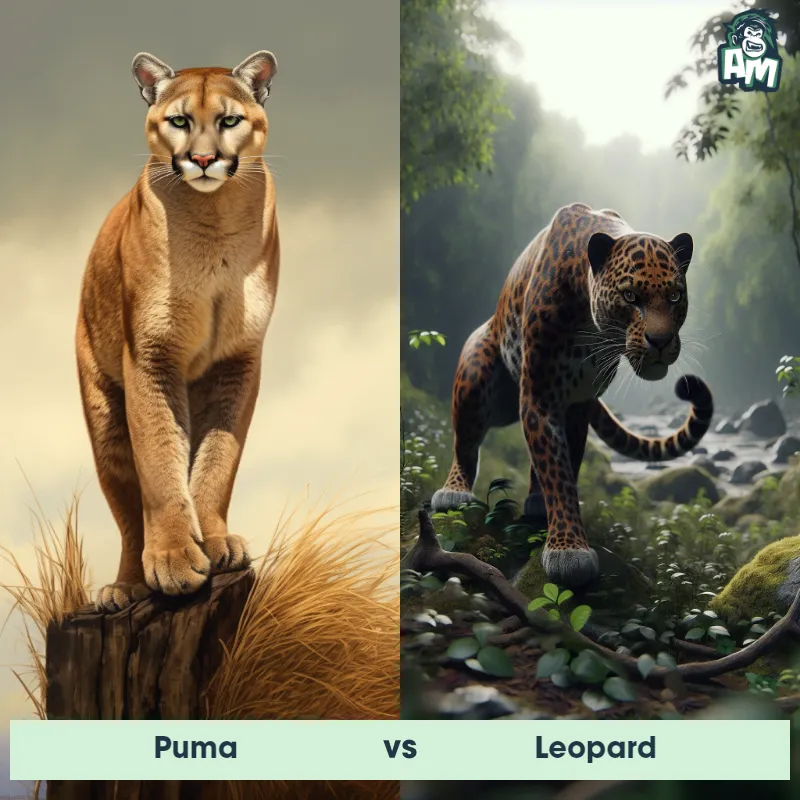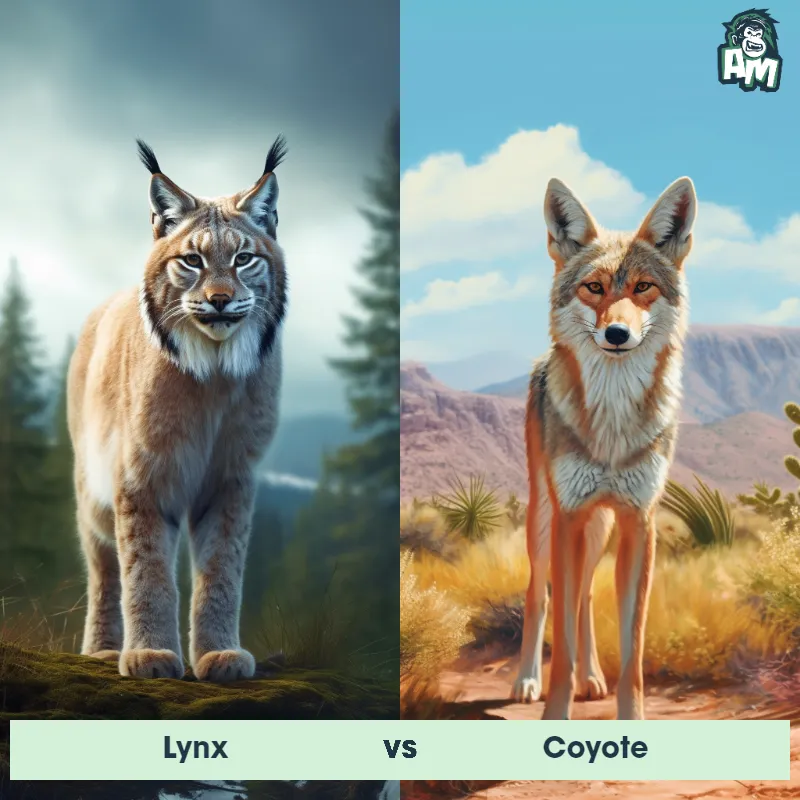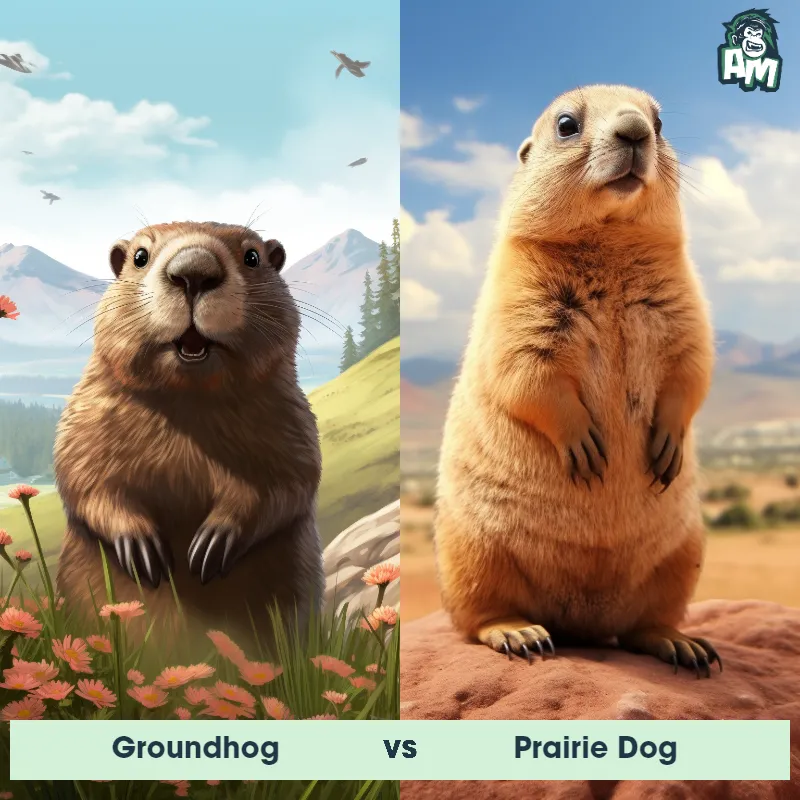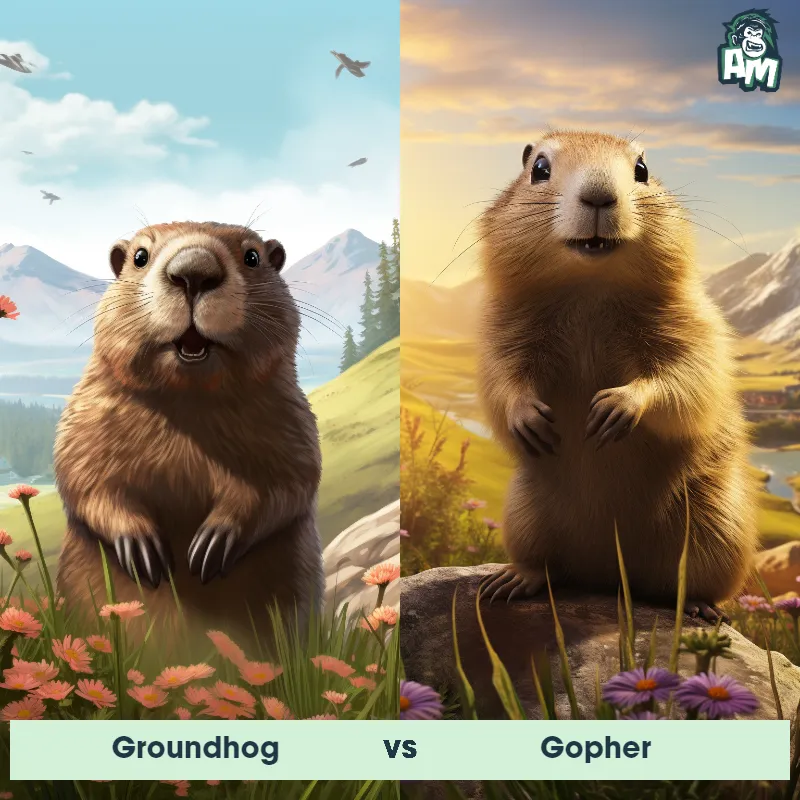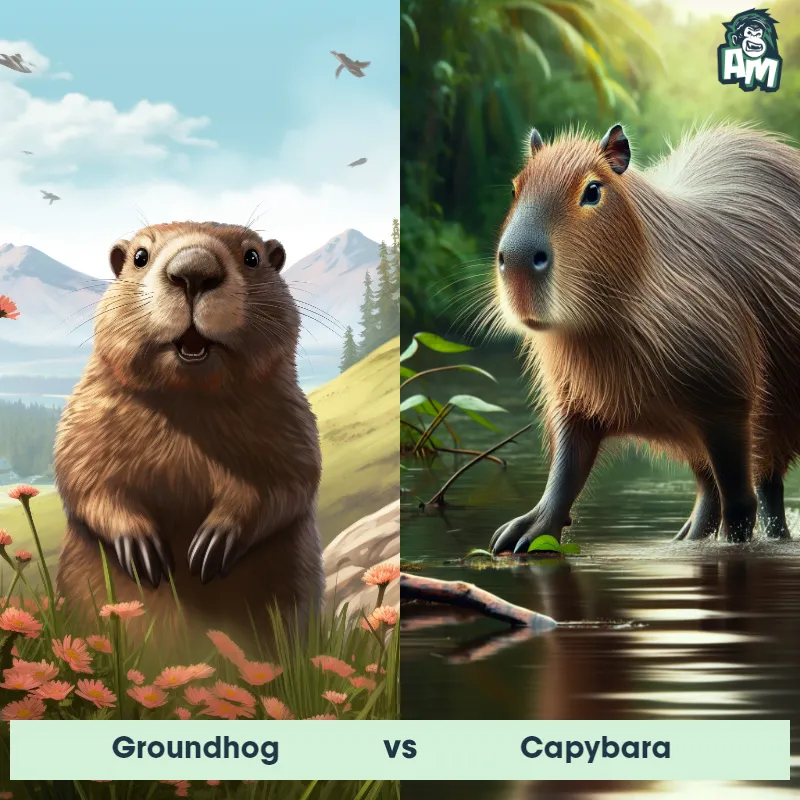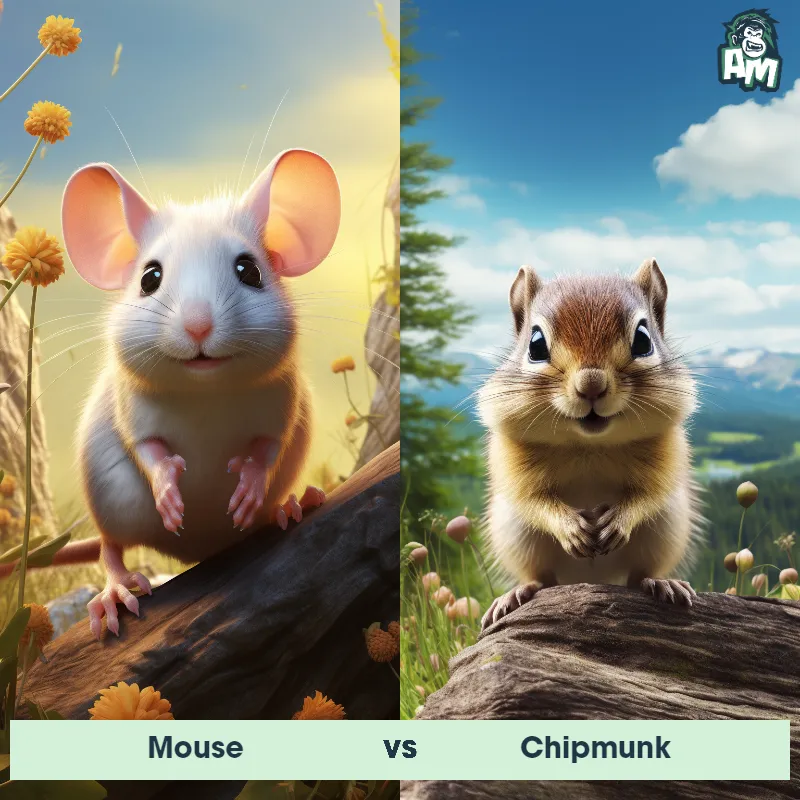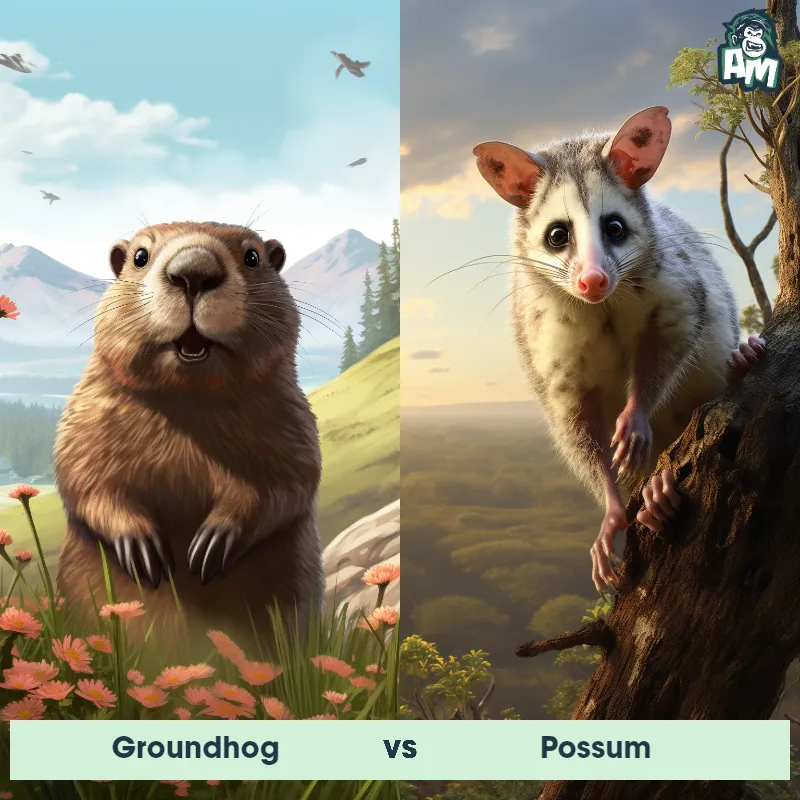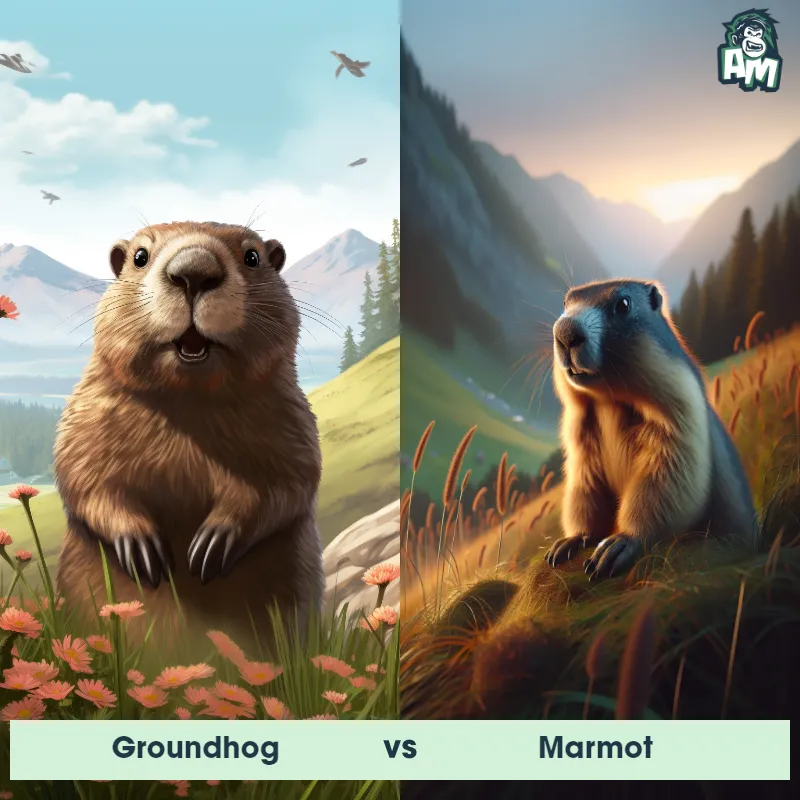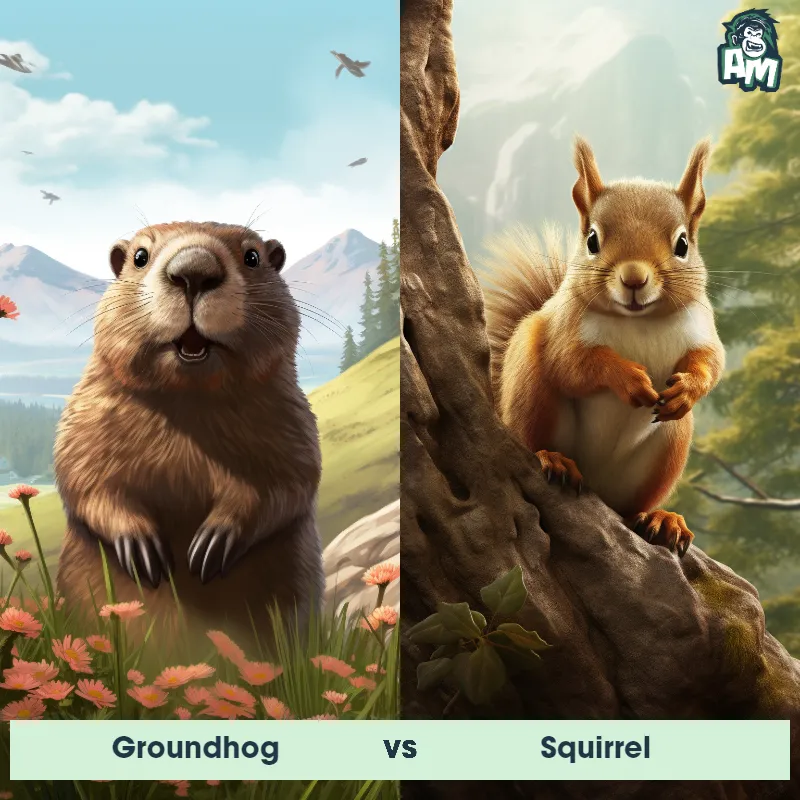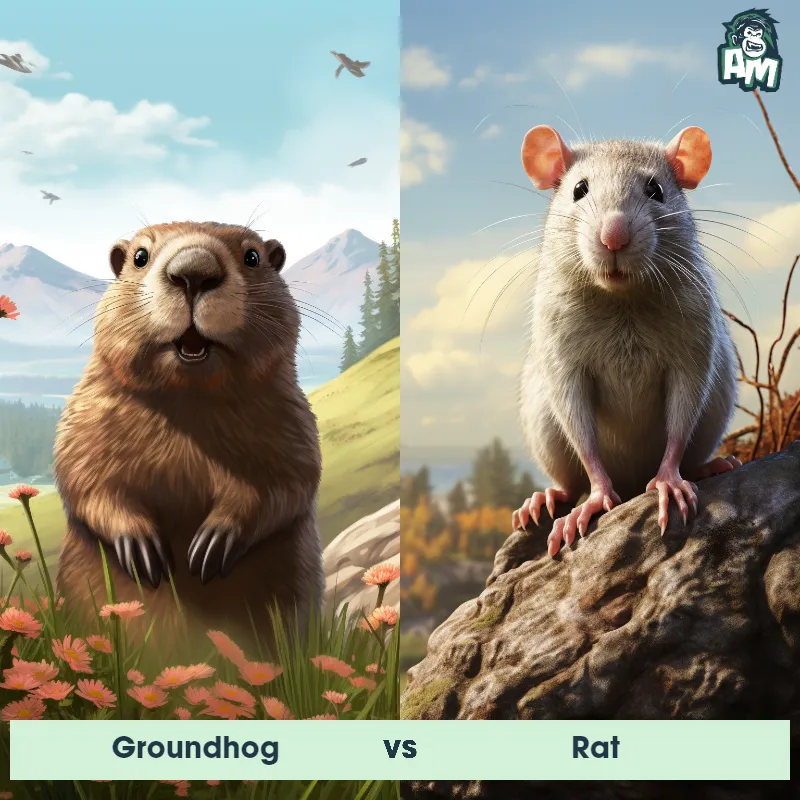Prairie Dog vs ChipmunkSee Who Wins

Ladies and gentlemen, welcome to this thrilling matchup between two feisty contenders in the animal kingdom! We have a Prairie Dog going head-to-head with a Chipmunk in a three-round fight that promises to keep us on the edge of our seats. Both animals may be small in stature, but don't let that fool you, as they pack quite a punch. Let the battle begin!
Contender 1: Prairie Dog
The prairie dog is a type of burrowing rodent native to the grasslands of North America. These small creatures have a stout body, a small head, and short legs, which are perfect for their lifestyle underground. They typically have a coat that ranges from brown to reddish in color. Prairie dogs are highly social animals, known to live in large colonies or 'towns' which can consist of hundreds or even thousands of individuals, and their intricate burrow systems can cover large areas.
Fun Fact: Prairie dogs have a complex communication system, using different sounds and calls to warn their colony about the approach of different types of predators.
Contender 2: Chipmunk
Chipmunks are small, striped rodents known for their adorable appearance and cheek pouches used for storing food. Part of the squirrel family, they possess brown fur with dark and light stripes running down their backs and sides. They are very agile and fast, able to climb trees and walls with ease. Chipmunks are primarily ground dwellers and live in burrows, which are complex networks of tunnels and chambers.
Fun Fact: During the fall, chipmunks begin to gather food in their cheek pouches and bring it back to their burrows, creating a food cache that can help them survive through winter when they enter a state of torpor, similar to hibernation.
Matchup Stats
| Prairie Dog | Chipmunk | |
|---|---|---|
| Size | 12-16 inches (30-40 cm) | 4-7 inches (10-18 cm) |
| Weight | 1-3 lbs (0.45-1.36 kg) | 1-5 ounces (28-142 grams) |
| Speed | 35mph (56km/h) | 21mph (34km/h) |
| Key Strength | Ability to burrow quickly to escape danger | Agility and Speed |
| Biggest Weakness | Small size and lack of strong defensive capabilities | Small Size |
Current Votes
Prairie Dog vs Chipmunk
See Who Wins
View More Matches
Looking For More?
Similar Matches
Scientific Stats
| Prairie Dog | Chipmunk | |
|---|---|---|
| Scientific Name | Cynomys | Tamias |
| Family | Sciuridae | Sciuridae |
| Habitat | Grasslands | Forests, Woodlands, Gardens, Parks |
| Geography | North America | North America, Asia |
| Diet | Herbivore (Grasses, seeds, and occasionally insects) | Omnivorous (Nuts, Seeds, Fruits, Insects, Bird Eggs) |
| Lifespan | 3 years - 5 years | 2 years - 8 years |
Key Differences between Prairie Dog and Chipmunk
- Habitat: Prairie dogs are found predominantly in large open grasslands and prairies, where they construct complex underground burrow systems, while chipmunks are more commonly found in wooded areas with access to trees and shrubs that they use for cover and food storage.
- Body Shape: Prairie dogs have a plump and cylindrical body shape, while chipmunks possess a more slender and elongated body.
- Stripes: Both animals have stripes on their bodies, but the pattern differs. Prairie dogs have dark vertical stripes on their backs and sides with a lighter belly, whereas chipmunks have five dark fur stripes that run along their bodies, from head to tail.
- Ears: One key distinguishing feature is their ears; prairie dogs have relatively short and rounded ears, whereas chipmunks have larger and more noticeable ears.
- Size: Prairie dogs are notably larger than chipmunks, with an average length ranging from 12 to 16 inches, whereas chipmunks are smaller and measure about 5 to 7 inches.
- Tails: Prairie dog tails are shorter and less bushy, providing a more rounded appearance, while chipmunks have long, bushy tails that are used for balance and communication.



